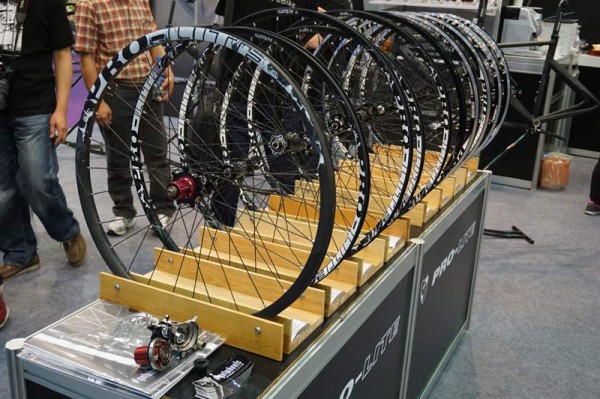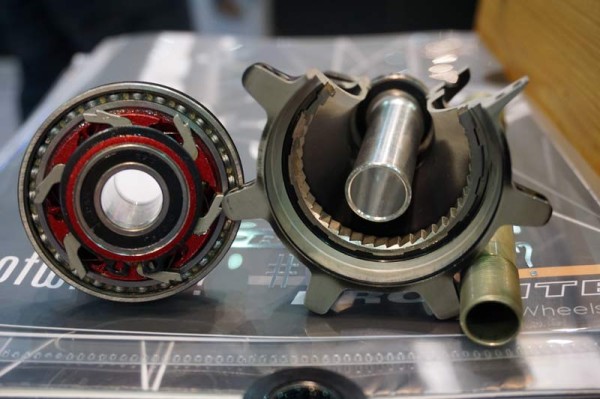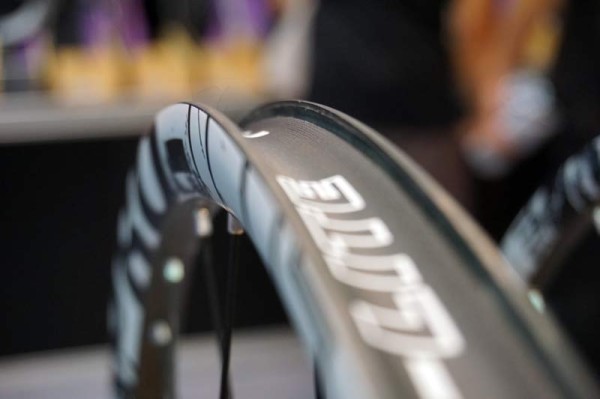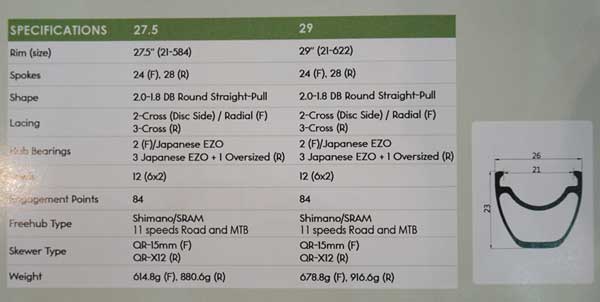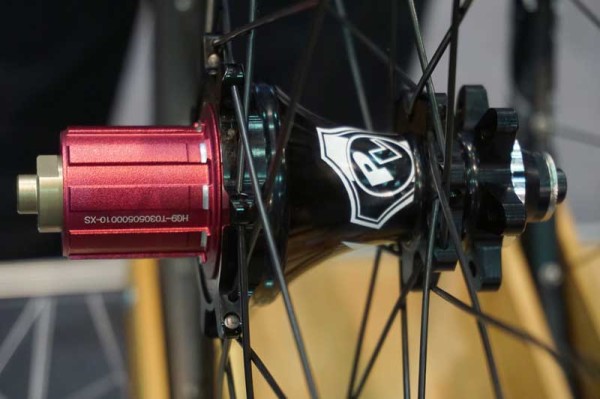The new Pro-Lite Antero Carbon mountain bike wheels will come in 27.5 and 29, with the latter working just fine for cyclocross, too.
They use their oversized pawl mechanism to get 84 points of engagement using six 2-step pawls. That’s clicking along next to an oversize Japanese EZO bearing to handle the higher loads caused by modern oversize cogs. The carbon rim has a width of 26mm ext/21mm int and measures 23mm tall. Check the internals and rim profiles, plus more new stuff, below…
Note the massive diameter of the sealed cartridge bearing just behind the pawls. With two engagement points per pawl, they provide about 4.2º of rotation before engaging.
A small shelf supports the tire bead for tubeless setup. Wheelset weights come in at about 1,495g (27.5”) and 1,595g (29er).
The hub uses an 11-speed ready freehub body, which comes in handy since the same internal setup will be used for their upcoming wider, tubeless ready Cicilia road wheels. Those will have an inside width of 19mm, 23.8mm external and be 21mm tall. A Disc brake version of that will follow this month.
Not shown, the new alloy VLR Triathlon frame, which they say is popular in Europe and Australia, gets a slightly slacker headtube than the carbon version to make it a little more accessible for beginners not ready for the super sharp handling of a race-specific carbon triathlon frame. But the rear end is slightly stiffer, so it’s still a performance bike that could tackle an Ironman. $599 for the frame, fork, headset and seatpost. The fork is their Atmos model, which has carbon legs and alloy steerer. Starts as small as a 46, running up to a 60.
